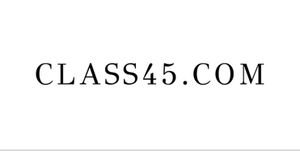THE TWO CATEGORIES OF TRADEMARK: WORD MARK AND DEVICE MARK
The term ‘Trade mark’ has been defined in Section 2(1)(zb) of the Trademarks Act, 1999 as , “a mark capable of being represented graphically and which is capable of distinguishing the goods or services of one person from those of others”. Section 2(1)(m) of the Act elucidates that a ‘mark’ includes a device, brand, heading, label, ticket, name, signature, word, letter, numeral, shape of goods, packaging or combination of colours or any combination thereof.
Trade marks are commonly applied in two categories: a word mark and a device mark. The name of the businesses or the name of a product/ service offered by an organization can be identified as word marks. At the same time, the device mark includes visual and oral depictions of a mark in the form of logos, images, packaging, etc.
- WORDMARKS
In the 21st century, we have seen a rise in startups and business organizations expanding their global reach through marketing and branding. Brand names are often tossed around in everyday conversation. The organization’s name or a particular product's name is actively used as a marketing instrument resulting in the name acquiring goodwill.It is imperative to protect the brand name or trade name or other aspects such as the combination of letters, numerals or words that acts as a source identifier of goods/services offered by a business. Registering a word mark grants the right to use and represent the word in any format giving an exclusive and extensive protection to the Applicant with respect to the word as a whole in connection to its business. It further allows the Applicant to prevent a third-party from using the registered word in any regard. For instance, ‘PARLE-G’ is a known brand. The word ‘PARLE-G’ can be protected as a word mark which will accord its proprietor the exclusive right to use the word ‘PARLE-G’ with respect to its goods/ services.
A slogan, if unique and catchy, may become significant for advertising and marketing. The slogan ‘JUST DO IT’ has been trademarked by the shoe company Nike, Inc. The slogan has a tremendous recall value and the mere mention of the slogan leads to an association in the minds of the consumers and traders with the company. Assuming that the slogan had not been trademarked, any third party may use the trademark and mislead the consumers to believe that the goods and services are associated with the company leading to dilution of the brand, loss of goodwill and to the business. It further highlights the importance of protecting the brand name or any words/ letters/ combination thereof to prevent the misuse of the name by a third party. Registering a word mark grants a broader protection to the proprietor than a device mark. However, a word mark lacks visual appeal leading to a possibility that the name may be forgotten as it lacks the flair to leave an imprint in the mind of the consumers.
- DEVICE MARK
A device mark is a graphical representation which may include an image, words, numerals, letters or combination thereof. If the aim of the proprietor is to protect the figurative elements or stylization or design, then filing a device mark is suitable. Registering a device mark would grant rights to the proprietor to prevent use of identical or deceptively similar device mark. Further, it extends the scope of protection to the figurative elements apart from the words used if any.
A device mark may be filed in a specific colour or in black and white. If the proprietor does not wish to claim a colour, the device mark must be filed in black and white. By not claiming a specific colour, the protection is extended even if the proprietor use the device mark in different colours provided the usage of the device mark is for the exact representation. Though, if a device mark was filed in a specific colour while registering a trademark, the proprietor has a protection over the device mark for the representation in that particular colour only. A separate trademark application should be filed to protect any variation in the representation of the device mark.
A device mark is visually more appealing to people than a word mark and leaves a greater imprint in a person’s mind than words attached to a particular business. For instance, the infamous Nike Swoosh ‘’, which is universally recognized. There is an instant association with the shoe company Nike, Inc in the minds of the general public.
However, a device mark has its own limitations. There is no scope for flexibility as the mark has to be used in the same way it has been represented in the trademark application. Even a slight change in the design from the registered trademark will have to be protected under a separate trademark application.
In order to obtain an overall protection, it is recommended to protect both word and device marks.

